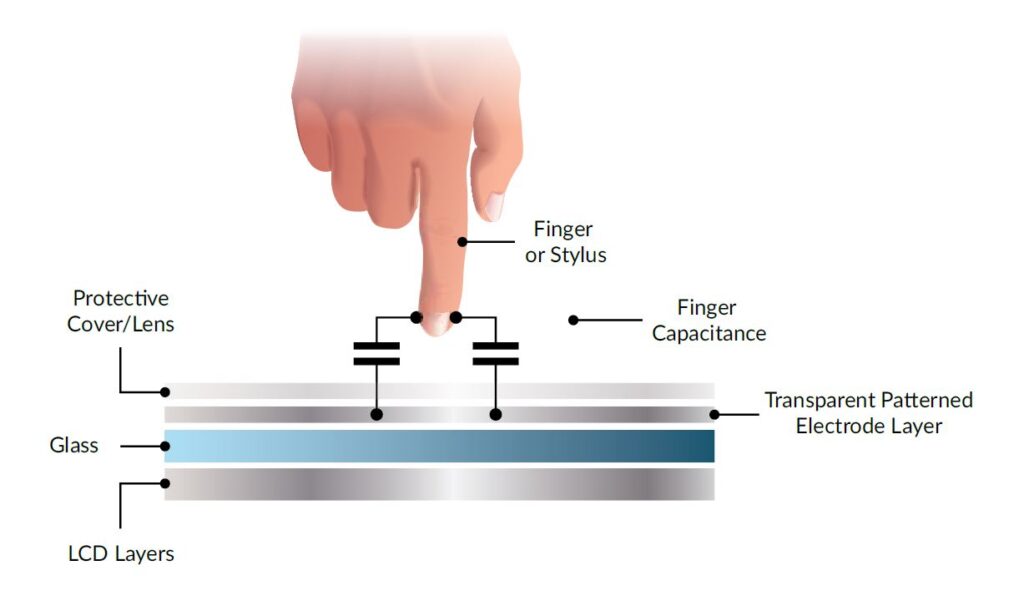In 2010, South Korea experienced a particularly cold winter. People couldn't activate their smartphones while wearing gloves, so they began wielding snack sausages, causing one company to see a 40% rise in sausage sales. So, what could sausages do but gloves couldn't, in other words, how do touch screens actually work?
In 1965, the first ever touch screen was invented to help British air traffic controllers efficiently update flight plans. However, the technology is too difficult to use and expensive to use widely. Over the following decades, engineers further developed this technology and experimented with alternative kinds of touchscreens. Soon, resistive touchscreens dominated the market. But then, in 2007, Apple released the first iPhone. It's a breakthrough, but it works using the same principle as the first touchscreen capacitance.

Today, capacitive and resistive touch screens are two of the most common types. They both use an external input to complete their circuits. In conductive materials, electrons run around atoms that form an electric current. In contrast to insulators, the electrons in the bonded conductor are weak and flow easily.
A resistive touchscreen has two layers. The top is a clear, flexible material, usually plastic, while the bottom is something rigid like glass. These layers are coated with a conductive substance and separated by a thin gap. When something pushes hard enough, the layers connect, completing the electric circuit. This causes a change in voltage that the machine software reacts to. Resistive touchscreens can be a little unresponsive. But they're generally cheap and durable, so they're favored for industrial or mass use.

A vast majority of the touchscreens produced in 2007 were resistive, but in the years following the iPhones release, most became capacitive. Individual models vary, but smartphone touchscreens today typically consist of a protective insulating glass exterior and an LCD screen at the bottom that produces the images you see. Between the glass exterior and the LCD screen are several sheets. One is lined with rows of a transparent conductive material that carry an alternating electric current. A thin insulating layer separates these conductive lines from others that are arranged as columns; one on top of the other, the lines form a grid. The points where they intersect are called nodes. The phones battery draws electrons along the first layer of lines, and some electrons accumulate at every node, creating a small electric field.

These screens are called capacitive touchscreens because the nodes act like capacitors by storing charge, they're generally easier to use than resistive touchscreens because they interact directly with your finger without the application of force. Your body is a great conductor and is constantly transmitting electric currents. Why? Because about 60% of you is water; now, while chemically pure water is an insulator, most water is impure. The water inside you is loaded with ions, atoms or molecules that have a net electrical charge. So, when you click on an app, your finger functions like a third electrical line, it interacts with the existing electric field which induces a weak electric current that travels through your finger and eventually back into the phone. This changes the amount of charge at the affected nodes and voltage measurements along the second layer of lines tell the phones microprocessor which part of the screen is being touched.
However, if you try using a smartphone while your hands are wet or gloved, you'll probably have some trouble. Both interrupt the electrical connection between your finger and phone. If water is splashed across the screen, it might trigger many underlying nodes, and the phone could act like you've touched it in multiple places at once. On the other hand, gloves are insulators, so the charge has nowhere to go. Meanwhile, objects that conduct electricity about as well as your finger like banana peels and certain processed meats can all activate the screen.
Source: Wallace, C., & Saini, S. (2022, July 28). Why a sausage can do what your gloves cannot [Video]. YouTube. https://youtu.be/IdWXT391FJE